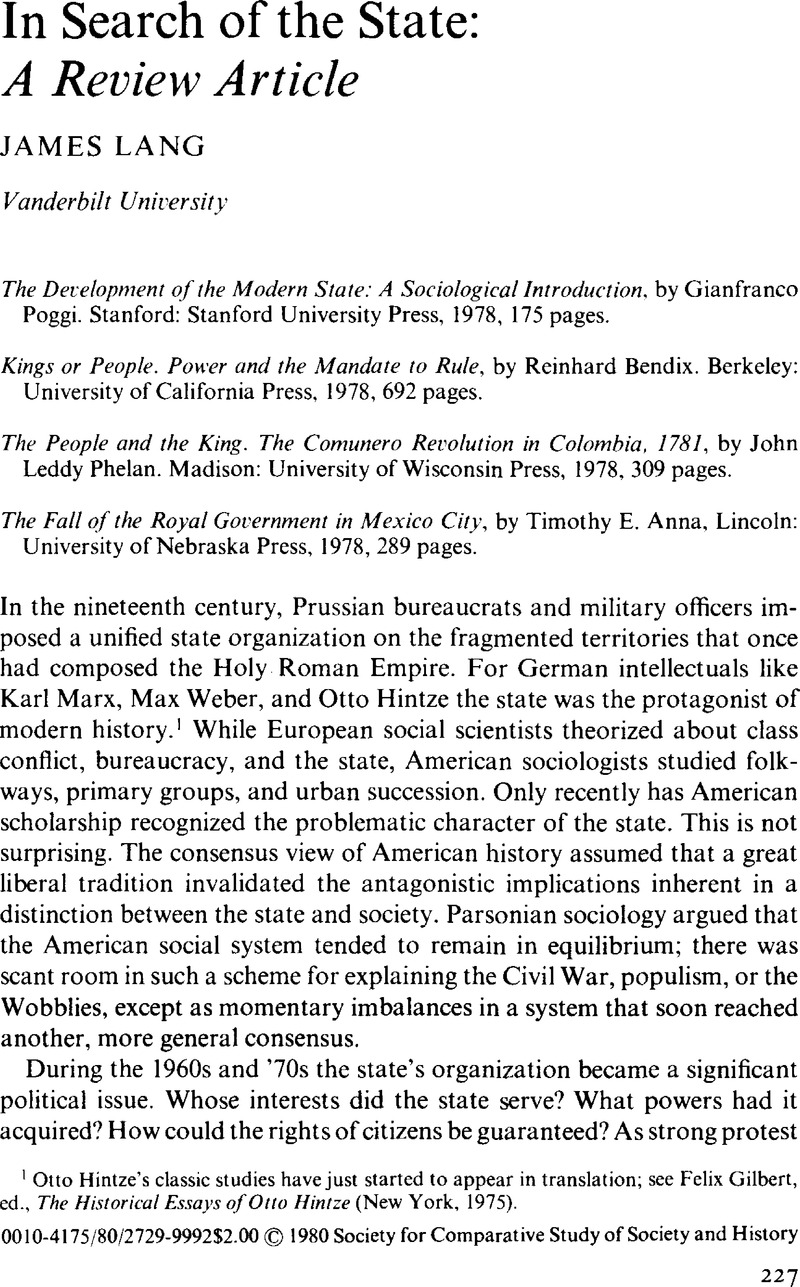No CrossRef data available.
Article contents
In Search of the State: A Review Article
Published online by Cambridge University Press: 03 June 2009
Abstract

- Type
- Approaches to Historical Comparison
- Information
- Copyright
- Copyright © Society for the Comparative Study of Society and History 1980
References
1 Otto Hintze's classic studies have just started to appear in translation; see Gilbert, Felix, ed., The Historical Essays of Otto Hintze (New York, 1975).Google Scholar
2 For example, see Tilly, Charles, “Revolutions and Collective Violence,”" in Handbook of Political Science, vol. 3, Macropolitical Theory, eds., Greenstein, Fred I. and Polsby, Nelson W., pp. 483–556 (Reading, Mass., 1975).Google Scholar
3 Examples include Dubofsky, Melvyn, We Shall Be All. A History of the Industrial Workers of the World (Chicago, 1969)Google Scholar; Rubenstein, Richard E., Rebels in Eden, Mass Political Violence in the United States (Boston, 1970)Google Scholar; Jeremy Brecher, Strike! (New York, 1972), and Goodwyn, Lawrence, Democratic Promise: The Populist Movement in America (New York, 1975).Google Scholar
4 See Tilly, Charles, “Does Modernization Breed Revolution?” Comparative Politics 5 (1973), pp. 425–7.CrossRefGoogle Scholar
5 See Bendix, Reinhard, “Tradition and Modernity Reconsidered,” Comparative Studies in Society and History 9 (1967), pp. 292–346.CrossRefGoogle Scholar
6 For example, see Bendix, Reinhard, Nation-Building and Citizenship (New York, 1964).Google Scholar
7 This is also the thesis of Phelan's earlier book. Kingdom of Quito: Bureaucratic Politics in the Seventeenth Century (Madison, 1967).
8 This strategy is valid for other states besides Mexico and is skillfully applied in Theda Skocpol, States and Social Revolutions. A Comparative Analysis of France, Russia, and China (Cambridge, Eng., 1979).
9 See Trimburger, Ellen Kay, Revolutions from Above: Military Bureaucrats and Development in Japan, Turkey, Egypt, and Peru (New Brunswick, N.J., 1978).Google Scholar


